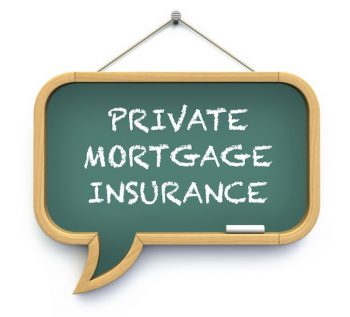
Private mortgage insurance, or PMI, sometimes gets a bad rap. And that’s unfortunate because PMI plays a very important part in the mortgage industry. Years ago, banks would require down payments of as much as 30 or 40 percent of the sales price. Back then, banks assumed all the risk on the loan and if someone defaulted, the bank would be forced to take back the home and sell it, hoping to get its money back through the sale. Such large down payment requirements kept many on the homebuying sidelines, especially first time buyers.
PMI changed all that back in the late 1950s. Private mortgage insurance is indeed an insurance policy. Should the loan ever go into default, the lender is reimbursed for the difference between 80 percent of the value and the amount of the down payment. PMI is not required when the loan balance is at or below this 80 percent threshold.
The tradeoff with a PMI policy is a higher monthly payment as annual premiums are paid by consumers in monthly installments. These initial premiums can vary based upon the type of loan, credit scores and loan term. Yet these higher monthly payments also mean the buyers came to the closing table with less than 20 percent down. Conventional mortgages today ask for a minimum down payment of 5.0 percent with special first-time buyer programs that ask for a 3% down payment.
Regulations, however, limit how long PMI can be charged. Once the loan balance is paid down to 78 percent of the original sales price, PMI will be automatically removed by the lender. On a typical 30 year loan, the balance will hit 78 percent in around 12 years. But you don’t always have to wait that long. There are some things you can do proactively to help PMI removed from your monthly payment.
The first thing to do is contact the lender and ask to cancel the current policy by ordering a new property appraisal. As property values increase over time, equity increases and the difference between the outstanding loan balance and the value can approach the 80 percent level. There really is no time limit when you can ask for a cancellation. If you feel that over the past couple of years that property values have increased to the point where PMI can be removed, simply make the request and wait for the appraisal to be completed.
You can also prepay a little every so often or every month. The additional payment goes straight toward the loan balance with none going to interest. Paying down the outstanding balance beyond the regular monthly payment can also help get rid of PMI sooner rather than later. You can make a lump sum payment as well, such as when you get a bonus from your employer or another financial jolt. Don’t worry, prepayment penalties on mortgages are essentially a thing of the past and you likely won’t be charged to pay extra on your home loan.
Finally, you can also increase the value of the home if you add additional square footage to your home or increase the value with the addition of a swimming pool or outdoor kitchen. Don’t expect to get a one-to-one value increase with the cost of the additions, but you can expect a higher value. Of course, it doesn’t make any sense to make a home improvement to get rid of PMI, but if you have made improvements since you first bought the home, the current appraised value can be higher than what you might think.
Coast2Coast Lending can provide you with the details, but you can expect a few requirements when requesting cancellation of PMI. First, you must also be current on your mortgage with no payments made more than 30 days past the due date over the past 12 months. Your lender may want to know if there are any other liens on the property, such as a home improvement loan or a home equity loan. This can be important because the lender will want to compare the current appraised value with the total amount of all liens.
PMI helps home buyers get into a home with less money at the closing table. But unlike certain government-backed loans such as USDA or FHA mortgages, PMI is not a lifetime thing. And you don’t have to wait 12 years to have it removed. Call us today at ph: 904-342-5507 to learn more.
